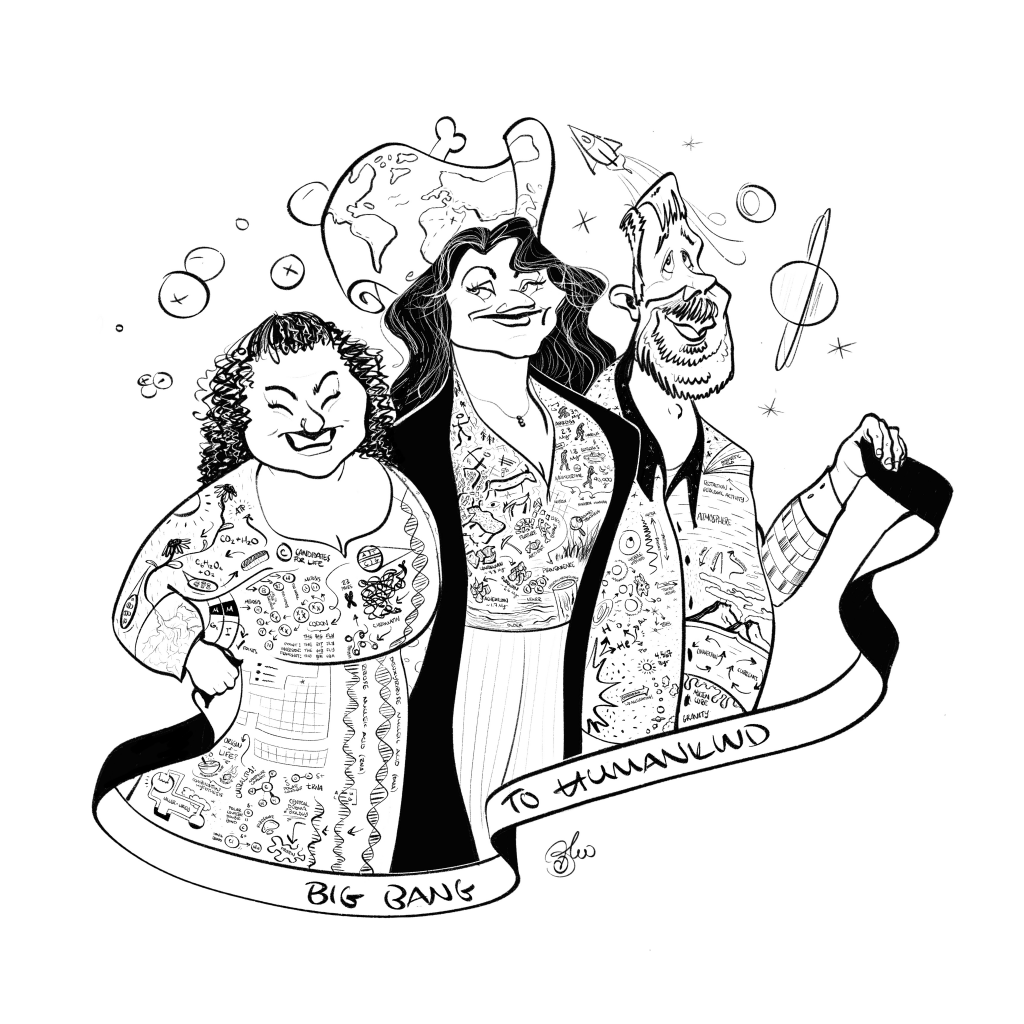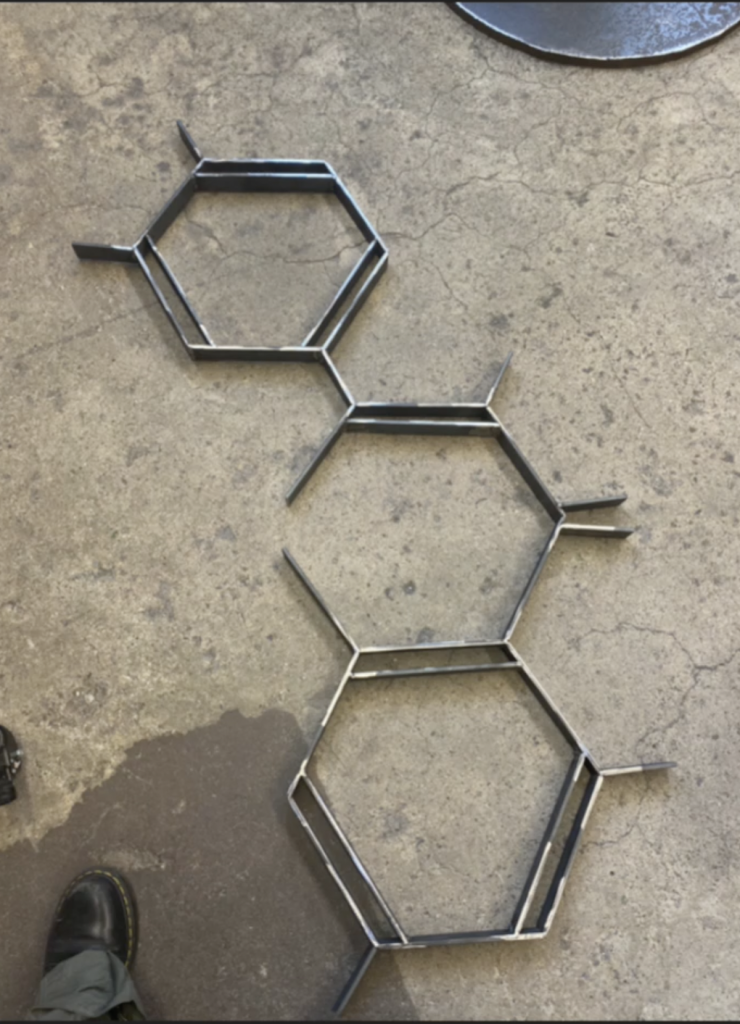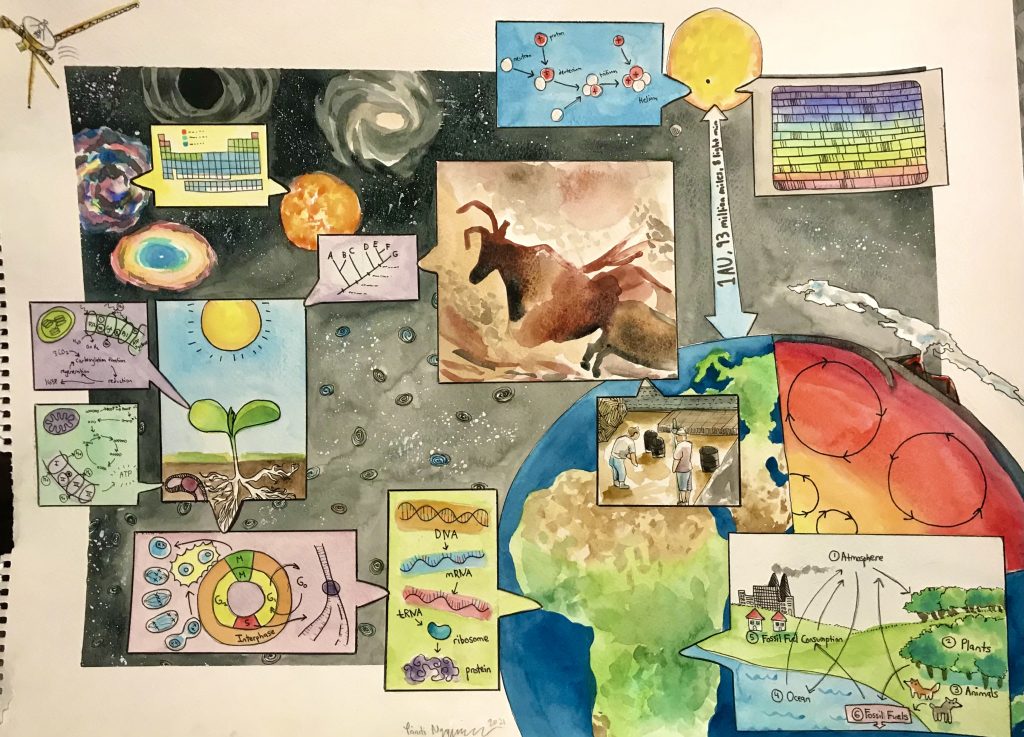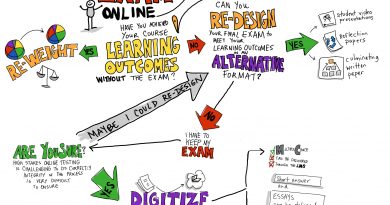
Creating a Creative Final Project – Big Bang To Humankind
Interview by Carie Cardamone, Associate Director CELT
This spring we are running a series on creative assessments faculty are running in their courses. We are launching the series with an interview with Lecturer Andrew West about a creative final project in a two–hundred-student, undergraduate, lecture-based course taught by three instructors and cross listed in Astronomy, Biology and Chemistry. The interview has been edited for clarity & brevity.

What motivated you to try a new approach with this final assessment?
I would love to sit here and say that I had this great pedagogical foresight, but this assessment was born out of this crazy time, Spring 2020. As an instruction team, we decided that we didn’t feel a cumulative big final exam would be fair. Instead, we wanted a creative project – something that summarizes and synthesizes the class, and which students could do in groups or by themselves. We didn’t have a description or any criteria. We just said, do something creative.
To be totally honest I wasn’t sure what the pedagogical value would be, and was a little skeptical that it would be great. Boy did I learned something – it turned out that the majority [of the projects] were spectacular. It was very clear that a large fraction of the students had spent a crazy amount of time synthesizing the information of the class and doing something creative with it. Projects included: writing songs, writing poems, doing parodies of songs, cartoons, children’s books, paintings, or drawings. We even had someone do a woodworking project where they manufactured the Voyager Golden Record. It was just amazing. For example, the caricature of the three main instructors [above] combines very detailed concepts that each introduced in the course, into a thoughtful synthesis of the material from the class.
Traditionally, the course had a midterm, a final, and a few homeworks along the way. Some students did great and loved the two exams, which formed the major assessments. Some students didn’t love them and didn’t do that great. Also, a lot of students only attended class when they felt like it, because they knew they just had to show up for the exams. In the six years I’ve been teaching this course, we’ve tried a lot of different things, including group work and even group exams.
What do you most hope students will gain from this assessment?
I really want them to find some aspect of the course, whether it’s a complete summary or one topic, that they think about a little deeper and really synthesize. Because we are moving thorough the material pretty quickly it’s important that they think deeply about something in a way they hadn’t previously. That’s become my pedagogical goal. Now that we’re a couple semesters in, I think we’ve seen most students accomplish that.
Some students go for an overview of class, such as writing a song or making a video. But most students choose a specific element of class, it might be astronomy or it might be anthropology, but something they are interested in exploring deeply. For example, a student made a painting of the different stages of stellar evolution. She thought a lot about it, and created the “museum notes” that describe what you are looking at. This is particularly important for abstract projects such as paintings or drawings or interpretative dance. One semester a team created a welding project, and one of the students taught the rest how to weld and assemble. The team welded a giant organic molecule as big as this room that I’m in. I just kept thinking those students are never going to forget that project. They’re always going to remember the semester in college where they learned to weld.

What do you see as successes?
Doing the final assessment this way, changed my pedagogical view of the whole class. I don’t want students to just end up with a cumulative bag of facts, instead I would like them to have a meaningful experience. This has been by far the highlight of my teaching career. It took the entire course on a transformation from the kind of classic lecture that you and I have both taken in our careers, and taught in our careers, and just completely changed the way I think. Doing the final this way forced me to think a lot more about what I even want to do in a given class period.
To me, it’s clear the amount of learning which goes on with this type of final project is so different than taking a cumulative exam about what we covered over the semester. For an exam, they’re going to review a lot, then forget a lot a few days after they take it. With this alternative type of assessment, I firmly believe that some of the projects that the students work on stay with them for certainly longer than a few days, and it wouldn’t shock me if it’s even longer than that. This is because of the amount of themselves they put into them, and the amount of effort and time. Students who come to office hours to talk about the final project, and those in an optional weekly book discussion, have given very positive feedback about the project as an alternative to a final exam.
Where have you encountered challenges?
The last two semesters we’ve been supplying a rubric of how we would be grading these projects. I created it mostly for myself and the other instructors to justify the grades we were assigning students and to be able to say: here’s where you hit on these various marks. It was very helpful for this intention, but the negative offshoot was that some students began to tailor their project to the rubric, rather than just letting themselves be totally creative. There is a tension between a rubric as a way to help inform students, and anxiety around anything connected to a grade. For example, students may be thinking that the criteria of showing mastery of the subject means adding too many high-level details in a children’s story, or adding text labels with facts directly over a beautiful piece of artwork. Some conversations with students revealed that they were using the rubric like a checklist, but that was not my intention. I want to prioritize allowing them the freedom and creativity to really explore the concepts.
Also, it’s a very time-consuming project to grade. We do give students the option of doing the final project individually or in a group, and so we can have as many as 175 different projects turned in. Between the instructors and the TAs we have at least three people looking at each,, but I’ve gone through every single one. It’s a time-consuming job, but also really, really rewarding.
One of the things that I think that’s missing is a real exhibit. The way we’ve structured this so far is: all the students turn these in, and the instruction team and I get to see them. However, I think the students would benefit hugely from seeing them, and being part of the comments or grading of each other’s work. We’re going to explore something around that this semester.
It’s not perfect for 100% of the students, but that would be true of a final exam as well. While most students put a lot of effort in, every semester there is a team or two who will kind of phone it in. A question in my mind is how to work with the students who are struggling with this project. There are two checkpoints: the first is a quick questionnaire to get them thinking about the project and whether they will work in a group. Then three or four weeks before it’s actually due, they turn in a full prospectus and a short write up of what they are planning to do. I comment on all of these, and most of my comments are things like: you’re on the right page, and here are a couple of things to consider before you finish the project. And for those few which had not hit the mark, they get the feedback that the project you’ve presented so far is not going to be good, so here are some ideas, and you’re encouraged to come to my office hour to chat more. Some students followed up on that, and we came up with some good ideas for them, and some did not. Most of those who did not didn’t turn in projects that were great. The ones who struggle don’t appear to be struggling with an idea, or lack of artistic talent. Instead, it seems they are making a decision not to put in time, and it shows the same way it would on an exam.
What might you recommend to other faculty considering a similar approach to a final assessment?
Do it! My recommendation would be to try it out. With your eyes open that it is going to be a little bit more of a grading effort, but totally worth it. The joy of grading these, even though it is more effort is overwhelming, and totally worth it! I look forward to it tremendously. Every semester there are ones I get emotional about. . I ask my TAs for feedback at the end of every semester, and last semester all four of them said one of the highlights was assessing the final projects. It’s a lot of work for them, but they don’t find it tedious. That also is another nice data point that it’s not just me who enjoys reviewing and evaluating the final projects
For me, especially for a class like this, an intro science class not designed for future science majors, I don’t see a point to having a high-pressure cumulative exam that’s worth a huge fraction of their grade. I’m never giving final exam again. It’s been amazing. Initially I really thought offering the final this way would just be something fun. I was beyond pleasantly surprised! This has been by far the highlight of my teaching career.

See Also:



